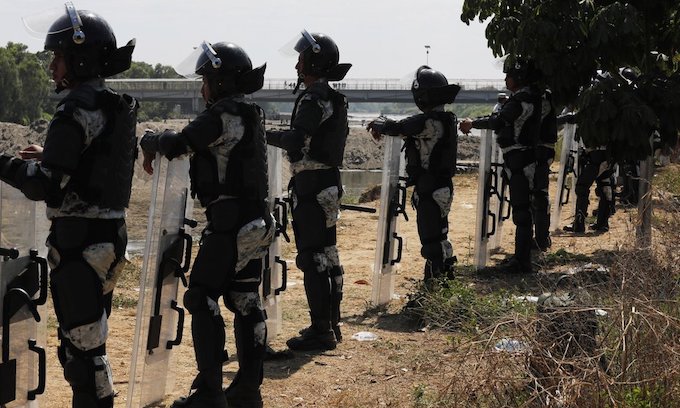TECUN UMAN, Guatemala — The number of migrants stuck at the Guatemala-Mexico border continued to dwindle Wednesday as detentions and resignation ate away at what remained of the latest caravan.
Overnight the first buses of migrants left Tecun Uman, Guatemala to repatriate migrants to their countries. On Tuesday, Mexico began flying and busing hundreds of migrants who had crossed to that country back to Honduras.
At a temporary shelter erected across from the local migrant shelter, there was a change in the attitude of those who remained after the buses departed. More began talking about their own plans for going back.
On Wednesday morning, the number of people there was perhaps half of what it was at its peak Sunday night.
Mexican President Andrés Manuel López Obrador recognized the success of his government’s strategy Wednesday, noting that many of the migrants had begun to voluntarily return to their countries.
U.S. Department of Homeland Security Secretary Chad Wolf commended Mexico’s actions in a statement Wednesday.
“The efforts by the Mexican National Guard and other officials have thus far been effective at maintaining the integrity of their border, despite outbreaks of violence and lawlessness by people who are attempting to illegally enter Mexico on their way to the United States,” Wolf said. He said DHS was monitoring the caravan closely and had dozens of personnel throughout Central America assisting.
The AP saw U.S. Immigration and Customs Enforcement agents working with Guatemalan police at highway checkpoints last week as caravan members passed. The U.S. said they were there to help train and support local agents.
On Tuesday night 118 Hondurans voluntarily returned to their country from Tecun Uman on three buses organized by the International Organization for Migration and the Guatemalan government. More were expected Wednesday.
Walter Basilio, a 40-year-old from Cortes, Honduras was one of those who decided to board the bus.
“It’s really (difficult) to cross to the other side now,” he said. “Better to go home.” He said the clash with Mexican National Guardsmen on Monday on the opposite riverbank changed his mind. He said he wasn’t interested in getting beaten up.
But there were also signs that members of the caravan still committed to travelling north were melting back into the normal migratory flow and moving into Mexico in small groups that were more difficult to detect. While the caravans have garnered attention, they represent just a fraction of the normal migratory traffic moving from Central America up through Mexico.
__
Verza reported from Ciudad Hidalgo, Mexico. AP writer Sonia Pérez D. in Guatemala City contributed to this report.
© 2020 The Canadian Press. All rights reserved.
—-
This content is published through a licensing agreement with Acquire Media using its NewsEdge technology.



















Recent Comments